Once again:
... On the Tablet
of the Cross, the Palenque account begins with the birth of
First Mother six years before the Creation on 12.19.13.4.0 8
Ahaw 18 Tz'ek (December 7, 3121 B.C.) and five hundred and
forty [540 = 6 * 90] days earlier, the birth of First Father,
Hun-Nal-Ye, on 12.19.11.13.0 1 Ahaw 8 Muwan (June 16,
3122 B.C.). [540 + 6 * 360 = 20 * 27 + 80 * 27 = 2700.]
His birth is
connected to the Creation day, 4 Ahaw 8 Kumk'u (August
13, 3114 B.C.), when, according to the inscriptions, thirteen
cycles ended. The text mentions an action that First Father
accomplished on Creation day, but we haven't been able to
decipher what it was. However, in the next clause, the Palenque
scribes repeated Creation again and described it as 'it was made
visible, the image at Lying-down-Sky, the
First-Three-Stone-Place' ...
|
Defeat of
Seven Macaw |
May 28, 3149 B.C. |
12.18.4.5.0 1
Ahaw 3 K'ank'in |
|
Birth of First Father |
June 16, 3122 B.C. |
12.19.11.13.0 1 Ahaw 8 Muwan |
|
Birth of First Mother |
December 7, 3121 B.C. |
12.19.13.4.0 8 Ahaw 18 Tz'ek |
|
Creation |
August 13, 3114 B.C. |
4 Ahaw 8
Kumk'u |
|
Ahau. To blow freshly, coolness,
zephyr, salubrious, breeze, wind; ahau ora,
agreeable breeze. Hau, to
blow, blusterous, to breathe. |

hau ia
Ba2-11 |
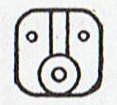
Ahau (Ahaw) |
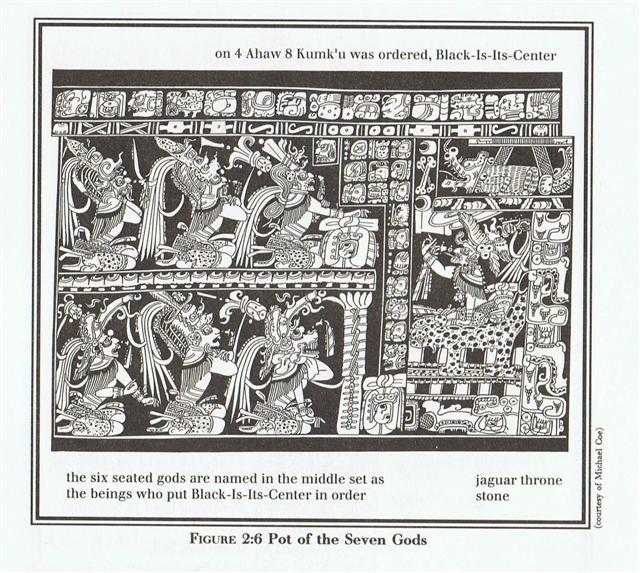
... We can count the precessional distance down
to the time when the previous creation ended: A.D. 1842 (time of
rongorongo) + 3149 B.C. (defeat of Seven Macaw) = 4991 years and
4991 / (26000 / 365╝) = ca
70 right ascension days. Therefore the date given as May 28
should correspond to a position among the stars around 70 days
earlier than that at the time of rongorongo. 148 (May 28) - 70 =
78 (March 19).
3149 B.C. (end of previous
creation) - 3114 B.C. (beginning of the present creation) = 35
years or ca half a right ascension day. August 13 (225) - 69 =
156 (June 5) = 78 (March 19) + 78. The synodic cycle of Mars was
780 days ...
By counting from heliacal Sirius (standing still
as always in
the last day of June) we have established that 70 right
ascension days earlier than at the time of rongorongo Sirius
when at the Full Moon in 30 DECEMBER would have arrived in the
night after the Bucket
Rope (Kerb).
And Sirius together
with Aldebaran could have
ended the previous creation:
... Gill gives a similar story from the Hervey
group, where the Little Eyes are Matariki, and at one
time but a single star, so bright that their god Tane in
envy got hold of Aumea, our Aldebaran, and, accompanied
by Mere, our Sirius, chased the offender, who took refuge
in a stream. Mere,
however, drained off the water, and Tane hurled Aumea
at the fugitive, breaking him into the six pieces that we now
see, whence the native name for the fragments, Tauono,
the Six, quoted by Flammarion as Tau, both titles
singularly like the Latin Taurus. They were the favorite one of
the various avelas, or guides at sea in night voyages
from one island to another; and, as opening the year, objects of
worship down to 1857, when Christianity prevailed throughout
these islands ...
|
CLOSE TO THE SUN: |
|
29 JUNE |
SIRIUS (181) |
1 JULY |
2 |
3 (254 - 70) |
|
*JULY 1 |
2 |
3 (*104 =
*172 - *68) |
4 |
5 |
 |
 |
 |
 |
 |
|
Ga4-23 |
Ga4-24 |
Ga4-25 (108) |
Ga4-26 |
Ga4-27 |
|
φ Leonis
(170.0),
ALULA
(First Spring of the Gazelle)
= ξ, ν Ursae
Majoris (170.5),
LABRUM
(Lip)
= δ
Crateris (170.6) |
σ Leonis
(171.1), λ Crateris (171.6), ι Leonis, ε Crateris
(171.9) |
γ Crateris,
π Centauri (172.0), κ Crateris (172.5), τ Leonis
(172.8)
GREDI (α
Capricorni)
|
ο╣ Centauri
(173.8) |
GIAUZAR
(Poison Place)
= λ Draconis (174.0), ξ Hydrae (174.3), ο▓ Centauri, λ
Centauri (174.8) |
|
September 7 |
8 |
9 (*172) |
10 |
11 (254) |
|
░September 3 |
4 |
5 (*168) |
6 |
7 (250) |
|
'August 11 |
12 (*144) |
13 |
14 |
15 (227) |
|
"July 28 |
29 (*130) |
30 |
31 |
'August 1
(213) |
|
CLOSE TO THE FULL
MOON: |
|
29 DECEMBER
|
SIRIUS (364) |
31 |
1 JANUARY |
2 |
|
*DECEMBER 31 |
*JANUARY 1 |
2 |
3 (368) |
4 |
|
CROSS-BARS |
ο Gruis,
Snowball Nebula = NGC7662
Andromedae (355.0), τ Oct. (355.3) |
no star listed (356) |
ι Phoenicis (357.3), ι
Piscium (357.4), λ Andromedae (357.9) |
|
ο Cephei (353.3),
KERB (Bucket Rope) = τ Pegasi
(353.6) |
κ Piscium (354.2), θ Piscium
(354.4),
υ
Pegasi
(354.9) |
|
March 9 |
10 (*354) |
11 |
12 |
13 (72) |
|
░March 5 |
6 (*350) |
7 |
8 |
9 (68) |
|
'February 10
(41) |
11 |
12 |
13 (*329) |
2-14 |
|
"January 27 |
28 |
29 (*314) |
30 |
31 |
By fetching up fresh water with a bucket and a
rope the Square of Pegasus could be inundated. The First (Fore) Spout
came with the first pair of corner stars in the Pegasus Square
and the 2nd Spout was at Sirrah:
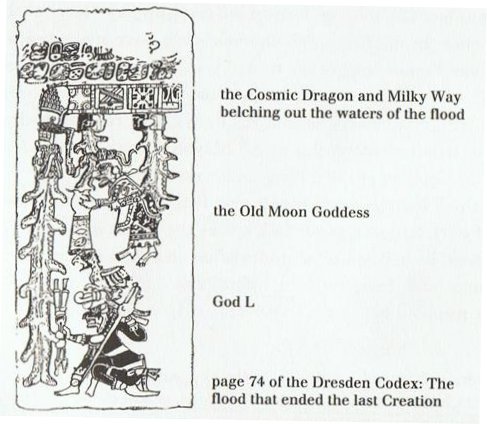
 |
 |
 |
 |
7 |
|
Cb13-22 |
Cb13-23
(714) |
Cb13-24 |
Cb13-25 (324) |
| te ika |
kua moe
ku hakarava |
te honu
kau |
oho te
vae |
|
SCHEAT
AQUARII = δ Aquarii (347.0), ρ Pegasi (347.2), δ
Piscis Austrini (347.4), FOMALHAUT
= α Piscis Austrini, τ Gruis (347.8) |
FUM AL
SAMAKAH = β Piscium (348.3), ζ Gruis (348.5), ο
Andromedae (348.9) |
Al Fargh al Mukdim-24 /
Purva
Bhādrapadā-26 / House-13 (Pig)
SCHEAT
PEGASI = β Pegasi, π
Piscis Austrini (349.3), κ Gruis (349.4),
MARKAB
PEGASI = α Pegasi
(349.5) |
23h (350.0)
υ, θ Gruis (350.0), π Cephei
(350.6), ι Gruis (350.9) |
|
March 3 |
4 |
5 (64) |
6 |
|
*DECEMBER 25 |
26 (360) |
27 |
28 |
|
23 DECEMBER |
24 |
25 |
26 (360) |
 |
 |
 |
 |
|
Cb14-3 (724) |
Cb14-4 |
Cb14-5 |
Cb14-6 (335) |
| te
marama |
te ika |
kua puo
te pouo - vai o ma˙ hia |
manu
noi |
|
λ Piscium (358.0),
MANUS CATENATA (Chained Hand)
= ι Andromedae (358.1),
ALRAI (Shepherd) = γ Cephei, θ Phoenicis (358.4),
κ Andromedae (358.7) |
θ, ω Aquarii (359.2), 78
Pegasi (359.5) |
ψ Andromedae (360.1), σ
Phoenicis (360.4) |
γ╣ Oct. (361.4), φ Pegasi
(361.7) |
|
March 14
(3-14) |
15 |
16 (440 = 75
+ 365) |
17 |
|
*JANUARY 5
(370) |
6 |
7 (*292) |
8 |
|
3 JANUARY
(368) |
4 |
5 (*290) |
6 |
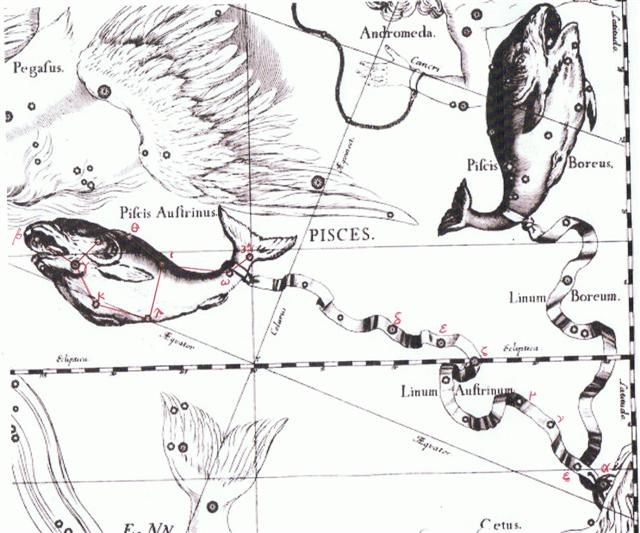
However, by reading literally we should look for
the defeat of Seven Macaw in May 28 (148), which was 70 days
later than day 78 (March 19):
|
400 |
 |
 |
|
Gb6-19 |
Gb6-20 (402
= 229 + 173) |
 |
 |
|
Ga2-6 |
Ga2-7 (37 =
402 - 365) |
|
ψ4 Aurigae
(100.5),
MEBSUTA
(Outstretched)
= ε Gemini
(100.7) |
SIRIUS = α
Canis Majoris
(101.2), ψ5
Aurigae (101.4), ν Gemini (101.6), ψ6 Aurigae (101.7) |
|
29 |
June 30
(181) |
|
ζ Pavonis (283.4), λ Cor.
Austr. (283.6),
DOUBLE
DOUBLE = ε Lyrae
(283.7), ζ Lyrae (283.8) |
Φ SAGITTARII
(284.0), μ Cor. Austr. (284.6), η Cor. Austr., θ Pavonis
(284.8)
(Unicorn) |
|
29 |
December 30
(364) |
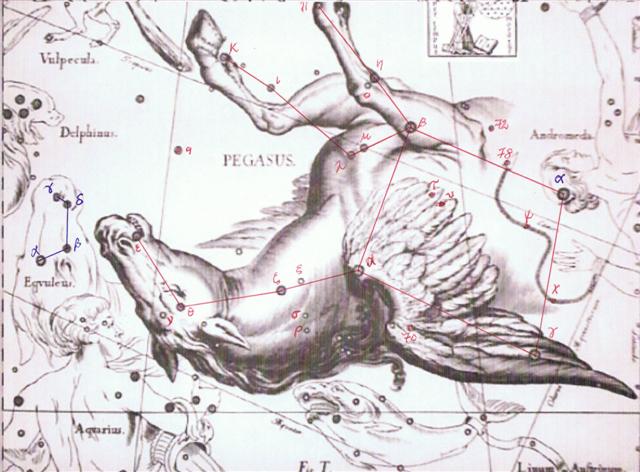
 |
 |
 |
 |
 |
 |
69 |
|
Gb6-19 |
(285 + 117) |
Gb6-21 |
Gb6-22 |
Gb6-23 |
(229
+ 177) |
|
June 29
(180) |
25 APRIL (115) |
12 + 13 + 15
+ 15 = 55 (= 181 - 115 - 11) |
|
ω Aquarii
(359.2),
78 Pegasi
(359.5) |
ψ Andromedae
(360.1), σ Phoenicis (360.4) |
γ╣ Oct.
(361.4), φ Pegasi (361.7) |
DZANEB
(Tail) = ω Piscium
(362.4), γ▓
Oct. (362.8) |
η Tucanae
(363.0),
ψ Pegasi
(363.1),
32 Piscium
(363.2), π
Phoenicis (363.4), ε Tucanae (363.6), τ Phoenicis
(363.9) |
θ Oct.
(364.4) |
|
π (73) |
March 15 |
16 |
17 |
18 |
19 (78) |
|
ζ Pavonis (283.4), λ Cor.
Austr. (283.6),
DOUBLE
DOUBLE = ε Lyrae
(283.7), ζ Lyrae (283.8) |
*JANUARY 6 |
7 |
8 |
9 |
10 |
|
4 JANUARY |
(187 + 183 =
370) |
6 (115 + 73
+ 183) |
7 |
8 |
|
Te Pou |
73 (= 365 /
5) |
... Later on in this
series of rituals, the Chorti go through a ceremony they
call raising the sky. This ritual takes place at midnight on the
twenty-fifth of April and continues each night until the rains
arrive. In this ceremony two diviners and their wives sit on
benches so that they occupy the corner positions of the cosmic
square. They take their seats in the same order as the stones
were placed, with the men on the eastern side and the women on
the west. The ritual actions of sitting down and lifting upward
are done with great precision and
care, because they
are directly related to the actions done by the gods at
Creation. The people represent the gods of the four corners and
the clouds that cover the earth. As they rise from their seats,
they metaphorically lift the sky. If their lifting motion is
uneven, the rains will be irregular and harmful ...
 |
 |
 |
13 |
 |
5 |
 |
|
Ga1-4 |
Ga1-5 |
Ga1-6 |
Ga1-20 |
Ga1-26 |
|
Ana-muri
(Aldebaran) |
ζ Herculis, η Tr. Austr.
(252.1), η Herculis, β Apodis (252.5) |
ATRIA = α Tr. Austr. |
Al Nitak
(The Girdle) |
Winnowing Basket (Nash) |
|
*68 |
*69 |
*253 |
*84 |
*273 (18h) |
|
May 28 (148) |
29 |
30 (*70) |
June 13
(164) |
19 (*273 -
183) |
|
*MARCH 21
(80) |
22 |
23 |
*APRIL 8
(*18) |
*APRIL 14
(4-14) |
|
19 MARCH
(78) |
20 |
21 (0h) |
6 APRIL
(*16) |
12 APRIL
(*21) |
|
23 |
Ga1-6 has a back part and a front part. The
latter shows light had arrived in the night sky (ragi).
To the left (in the past) there appears to be a dark fish eating
(increasing in size), but here this was an event in the past.
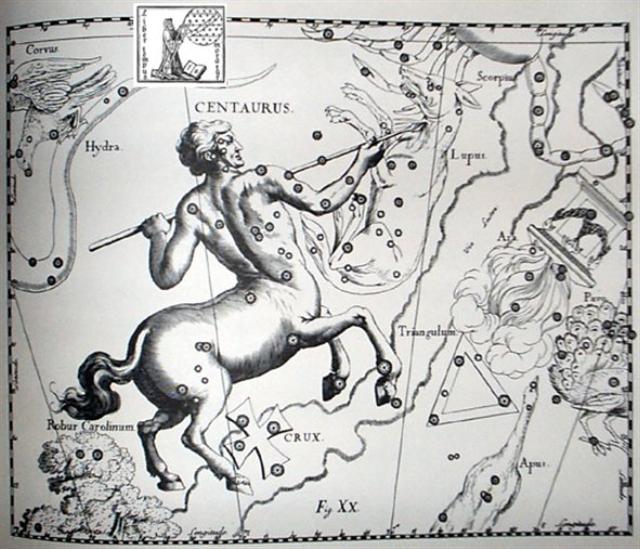
Atria is the star close to the neck of Apus (the
Bird of Paradise).
|
 |
 |
|
ha˙ |
March 19 (78) |
| Hau, ha'u
Hau =
Thread, line, string, ribbon; this is the name of
the fibres of the hauhau tree formerly used
to make twine, cloth, etc.; hau kahi, fishing
line for tuna; hau here, line for eel trap;
hau moroki, strong, tough line, thread;
hau paka, fibres of the hauhau tree,
which were first soaked in water, then dried to
produce a strong thread.
Ha'u = Hat. Vanaga. Hat,
cord; the tree Triumfetta semitriloba. Van
Tilburg. Ta.: The tree Hibiscus tiliaceus.
Henry.
Hau. 1 a. Hibiscus. b.
Wick. P Pau.: fau, hibiscus. Mgv.: hau,
id. Mq.: fau, hau, id. Ta.: fau,
id. 2. To contribute. Ta.: aufau, to pay, to
contribute, to subscribe. 3. Hat, cap, helmet;
hakarere ki te hau, to take off the hat. Ta.:
fauurumaa, war bonnet. 4. Dew; hakaritorito
ki te hau, to bleach in the dew. P Mgv.,
Mq.,Ta.: hau, dew. 5. To blow freshly,
coolness, zephyr, salubrious, breeze, wind (hahau,
ahau); kona hauhau, kona hahau,
a breezy spot; ahau ora, agreeable breeze;
hakahahau, to hang out in the air; hakaahau,
to blow. T Mgv.: hau, to blow, blusterous, to
breathe. Haua, hoarse. (Hauha);
araha hauha, to wait for, to look forward to.
Hauhau, 1. dog (onomatopoetic). 2 a. To scratch,
to scrape, to rub. b. Wood used in plowing fire. 3.
(hau 5). Haumaru (hau 5 -
marumaru) cool, cold. Hau¨, to replace.
Hauva, twin, cut T. Hauvaero (hau
3 - vaero) plume, aigrette, head ornament.
Hauvarikapau (hau 3 - varikapau)
plume, aigrette, head ornament. Churchill.
Pau.: Hau, superior,
kingdom, to rule. Mgv.: hau, respect. Ta.:
hau, government. Mq.: hau, id. Sa.:
sauā, despotic.
Ma.: hau,
superior. Hauhau,
to attack. Ma.: hau,
to chop. Churchill.
Sa.: fau,
to tie together, to fasten by tying, the tree (Hibiscus
tiliaceus)
whose bast is used for cord, the kava strainer made
therefrom, strings in various uses; fafau,
to lash on, to fasten with sennit; faufau,
to fasten on, to tie together. To.: fau,
to fasten up the hair, the name of the hibiscus, the
kava strainer made therefrom;
faufau,
to fasten the outriggers of small canoes; hau,
to fasten to; fehauaki,
to tie. Fu.: fau,
the hibiscus, the kava strainer; fa¨,
fafa¨,
fa¨fa¨,
to attach, to tie. Niuē:
fau,
fafau,
to make by tying. Fotuna:
no-fausia,
to tie, to fasten. Ta.: fau,
the hibiscus; fafau,
to tie together. Pau.: fau,
the hibiscus. Nuguria: hau,
id. Ma.: hau,
to bind, to fasten together;
whau,
a shrub; whauwhau,
to tie. Ha.: hau,
name of a tree with a practicable bark. Mq.: hau,
the hibiscus. Mgv.: hau,
id.; hahau,
to join or tie with cords. Nukuoro: hau,
the hibiscus, a garland. Mg.:
au,
the hibiscus. Vi.: vau,
the hibiscus; vautha,
to bind together. Churchill 2. |
|
... The
dream soul of Hau Maka continued her journey
and, thanks to her mana, reached another
land. She descended on one of the small islets (off)
the coast. The dream soul of Hau Maka looked
around and said: 'These are his three young men.'
She named the three islets 'the handsome youths of
Te Taanga, who are standing in the
water'.
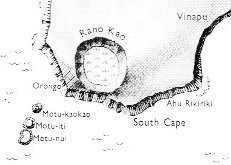
The
dream soul of Hau Maka continued her journey
and went ashore on the (actual Easter) Island. The
dream soul saw the fish Mahore, who was in a
(water) hole to spawn (?), and she named the place
Pu Mahore A Hau Maka O Hiva. The dream soul
climbed up and reached the rim of the crater. As
soon as the dream soul looked
into the crater, she
felt a gentle breeze coming toward her. She named
the place Poko Uri A Hau Maka O Hiva ...
|
|
Poko
1.
Fragrant; to smell, to give off a smell: he-poko
te eo, it gives off a pleasant smell. 2. To
hunt, to catch with a trap, to snare. He-kţ e
Tori: maaku-ß e-ea ki te manu, e-poko i te po i ruga
i te opata. Tori said: I shall go and catch
birds at night, up on the cliff. 3. Thunder (also
hatutiri). 4. (Also: pokopoko.) Hollow,
hole, depression, any deep, concave object; to leave
in a hole, in a depression. Pokoga, chasm;
summit. Pokohata, female rat: kio'e
pokohata. Pokopoko, woman bent under the
weight of her years: vţ'e pokopoko. Vanaga.
1. Sound of the sea; tai poko,
breakers. Pokopoko, to slap water. Mgv.:
pokokina, resonant, clear-toned. Mq.: poko,
to slap the water in imitation of drumming;
pokokina, sound of water. 2. Rut, beaten path. P
Pau.: poko, hollow; pokopoko, concave,
to excavate. Mgv.: poko, to dig, to excavate,
to hollow out. Mq.: pokoko, to crack open;
pokona, to hollow out, to excavate. Ta.:
poˇpoˇ, hollow, deep. 3. Infernal; pokoga,
hell, infernal cave; topa ki te pokoga, to
damn (lit: to go down to hell.) Mq.: pokona,
cavity, hole. Churchill.
Pokopoko: 1. Womb. PS Sa.:
po'opo'o, clitoris. Mq.: pokopoko,
pudendum muliebre. 2. Pokopoko vae,
footprints. 3. Concave, deep, ditch, mysterious;
pokopoko ihu, nostril (Ta.: poˇpoˇ
ihu); pokopoko ke, fathomless;
pokopoko taheta, concave.
Hakapokopoko, to deepen. Chuchill. |
|



















